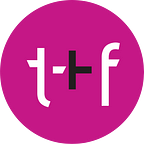Part 4 — The Robust Proposal (Qualitative Research Proposal Series)
This is Part 4 of a four-part series on proposal writing for qualitative research. Please read Parts 1, 2, and 3 of this series. They cover how to craft an overview as a starting point of conversation with the client, best practices for developing a budget, and how to justify proposal details.
You have made it this far with the client! You’ve crafted your overview, which piqued their interest and gave them a beacon. Your budget calculation has helped you understand the amount of actual work that will take place to complete the project. Ensuing discussions forged the way for further clarity on the executable details.
Now is the time to iron out the legal language, and document the specifics. In addition to having all the details about the study objectives, methodology, sample, and cost (which are all in the overview), your proposal is going to need:
1. Phase by phase breakdown
2. Terms and conditions
3. Signature page
1. Phase by phase breakdown
Accompanying a phase overview (a snapshot of the entire program), we separate each phase onto its own page. We spoke of the table in Part 1 — this takes each “column” from the table and presents all excruciating details. For each phase, we put in specifically what we will do (the tasks), the deliverables, and the assumptions. Tasks are pretty self-explanatory, but being very pointed as to the actual work transpiring is very important. Mention all of the actual work that go into the task, such as making a document, holding a meeting (and length), creating an agenda, etc.
We almost always indicate the form factor of the deliverables at each phase. Creating a PowerPoint presentation for a check in, is very different from drafting a set of engaging posters. If there is an ambiguity about the quantity of certain deliverables, we usually indicate an “up to” point — such as “up to two screeners.”
Assumptions are dependencies from the client. We usually think of them in terms of how much effort the client must put in, and what are some constraints discussed prior to the development of the proposal. We have included assumptions that keep the client accountable if there’s a particularly tight timeline (i.e., client must respond in two days with feedback of draft). We have also included assumptions about field involvement. For instance, to cut costs, sometimes we rely on the client to be a note taker, therefore we put this directly into the assumptions so it is clear that the scope is based on that expectation.
The phase breakdown can be as granular as you feel comfortable, but keep in mind the overall arc of the program and your relationship with the client. Some will appreciate the attention to detail, while others (or their legal departments) will want more clarification on an assumption.
2. Terms and conditions
There are many online resources researchers can use as terms and conditions. Always include them in the robust proposal. Sometimes the client legal team will have push back on particular language, or will want to include their own (such as intellectual property ownership). It’s always prudent to have a legal expert to consult with to draft your own terms and in cases in which clients want to make revisions.
3. Signature page
This is the dotted line page! Sometimes it gets forgotten, and then the client has nowhere to put their signature. Always have the client sign first, in case they come back with revisions along with their signature.
Proposals are so important for qualitative researchers. With so many moving parts, ambiguity in the outcomes, and reliance on the findings to drive other processes, it is crucial for researchers to develop strong practices for sound proposal writing.
This concludes our first foray into a blog series. We hope you enjoyed reading it and look forward to answering any other tactical questions you might have.
